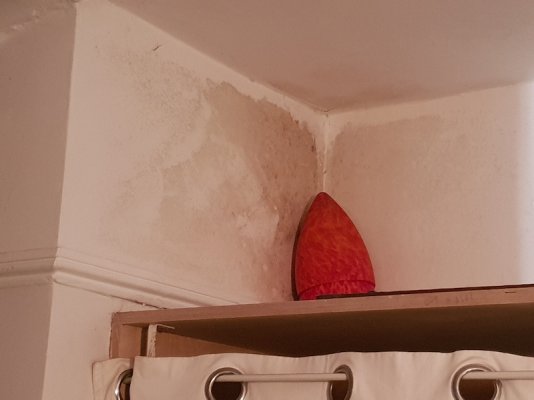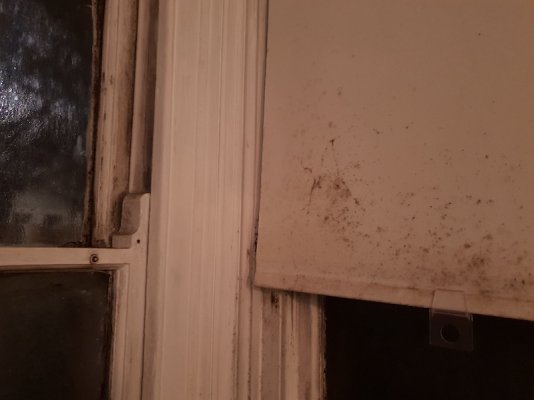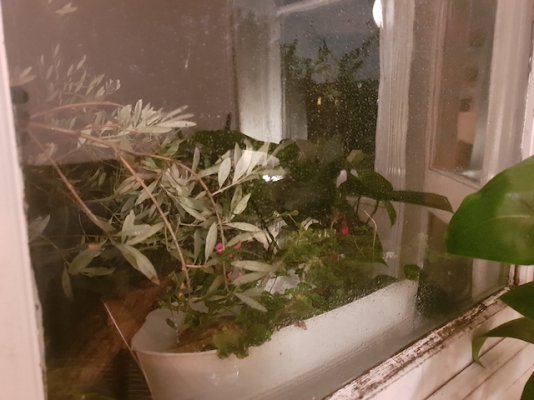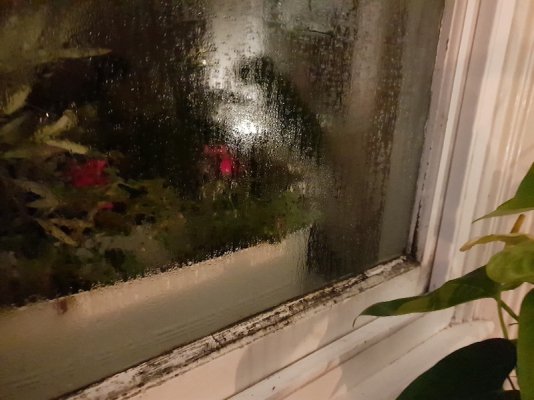Hello,
My last post a few years back focussed on damp which I thought was rising due to external skirting bridging the DPC. I have since installed a French Drain around the property with a raised decking above and a non hydraulic lime mortar rendered skirting above the DPC. Further investigation has shown that probably the damp experienced in my house was not caused principally by rising damp as the bricks seem mostly dry. Anyway a few years on and the damp is no better, in fact I think it's getting worse. This is despite using a vented tumble dryer instead of radiators to dry clothes in winter.
I would like to seek some more advice if possible. There's quite a list of questions I have so I apologise if this post is too long.
The property is a ground floor victorian solid brick with single glazed sash windows. We primarily use gas central heating but occasionally light a fire (which helps a lot). The property was converted into a ground floor flat and my wife and I life there with our son. The floors are raised timber with no floor coverings, carpet etc and there is a cellar that is nearly always completely dry. The windows are drafty and generally I'd say there is plenty of natural ventilation. The walls are a mixture of natural lime and gypsum plasters as one would expect, given the number of hands the property must have been in. There is no wallpaper but the walls are painted with matt vinyl emulsion.
The black mould is becoming a big problem extending in both bedrooms and the living room but not the bathroom, kitchen or hallway. The kitchen has no extractor, only the natural ventilation through a drafty window. There is no ventilation in the bathroom except a basic fan that comes on for 30 mins every time the light is switched on.
I am not in a position to hack off all the gypsum plaster, re-apply a lime mortar and re-decorate the entire flat with lime wash or similar. I have investigated a few options to reduce the problem and would like your thoughts if possible (Thank you).
My questions are thus:
1) Would it be beneficial to replace all the single glazed sashes with double glazed windows? (they do need replacing)
2) Is there an option to redecorate over matt emulsion with a clay based paint or similar to absorb some of the condensation?
3) I have looked into Positive Input Ventilation systems (PIV) wall mounted to drive fresh air into the property. However it seems odd that it could help because it's already drafty enough. Has anyone used these and is it worth installing. We have no loft
4) If PIV systems are worthwhile could we use our cellar to vent (suck) stale air out of our house (in a similar way to the vented tumble dryer) for example?
5) Are more sophisticated extractor fans worth looking at and de-humidifiers for that matter? Running costs are a concern.
6) If there are any other possible solutions to look into I'd jump at the chance!
7) I am not interested in any kind of DPC injection.
I have attached some images of the damp... it does look a bit like a horror story!
If anyone can help then I would be very grateful!
Thank you.
My last post a few years back focussed on damp which I thought was rising due to external skirting bridging the DPC. I have since installed a French Drain around the property with a raised decking above and a non hydraulic lime mortar rendered skirting above the DPC. Further investigation has shown that probably the damp experienced in my house was not caused principally by rising damp as the bricks seem mostly dry. Anyway a few years on and the damp is no better, in fact I think it's getting worse. This is despite using a vented tumble dryer instead of radiators to dry clothes in winter.
I would like to seek some more advice if possible. There's quite a list of questions I have so I apologise if this post is too long.
The property is a ground floor victorian solid brick with single glazed sash windows. We primarily use gas central heating but occasionally light a fire (which helps a lot). The property was converted into a ground floor flat and my wife and I life there with our son. The floors are raised timber with no floor coverings, carpet etc and there is a cellar that is nearly always completely dry. The windows are drafty and generally I'd say there is plenty of natural ventilation. The walls are a mixture of natural lime and gypsum plasters as one would expect, given the number of hands the property must have been in. There is no wallpaper but the walls are painted with matt vinyl emulsion.
The black mould is becoming a big problem extending in both bedrooms and the living room but not the bathroom, kitchen or hallway. The kitchen has no extractor, only the natural ventilation through a drafty window. There is no ventilation in the bathroom except a basic fan that comes on for 30 mins every time the light is switched on.
I am not in a position to hack off all the gypsum plaster, re-apply a lime mortar and re-decorate the entire flat with lime wash or similar. I have investigated a few options to reduce the problem and would like your thoughts if possible (Thank you).
My questions are thus:
1) Would it be beneficial to replace all the single glazed sashes with double glazed windows? (they do need replacing)
2) Is there an option to redecorate over matt emulsion with a clay based paint or similar to absorb some of the condensation?
3) I have looked into Positive Input Ventilation systems (PIV) wall mounted to drive fresh air into the property. However it seems odd that it could help because it's already drafty enough. Has anyone used these and is it worth installing. We have no loft
4) If PIV systems are worthwhile could we use our cellar to vent (suck) stale air out of our house (in a similar way to the vented tumble dryer) for example?
5) Are more sophisticated extractor fans worth looking at and de-humidifiers for that matter? Running costs are a concern.
6) If there are any other possible solutions to look into I'd jump at the chance!
7) I am not interested in any kind of DPC injection.
I have attached some images of the damp... it does look a bit like a horror story!
If anyone can help then I would be very grateful!
Thank you.






